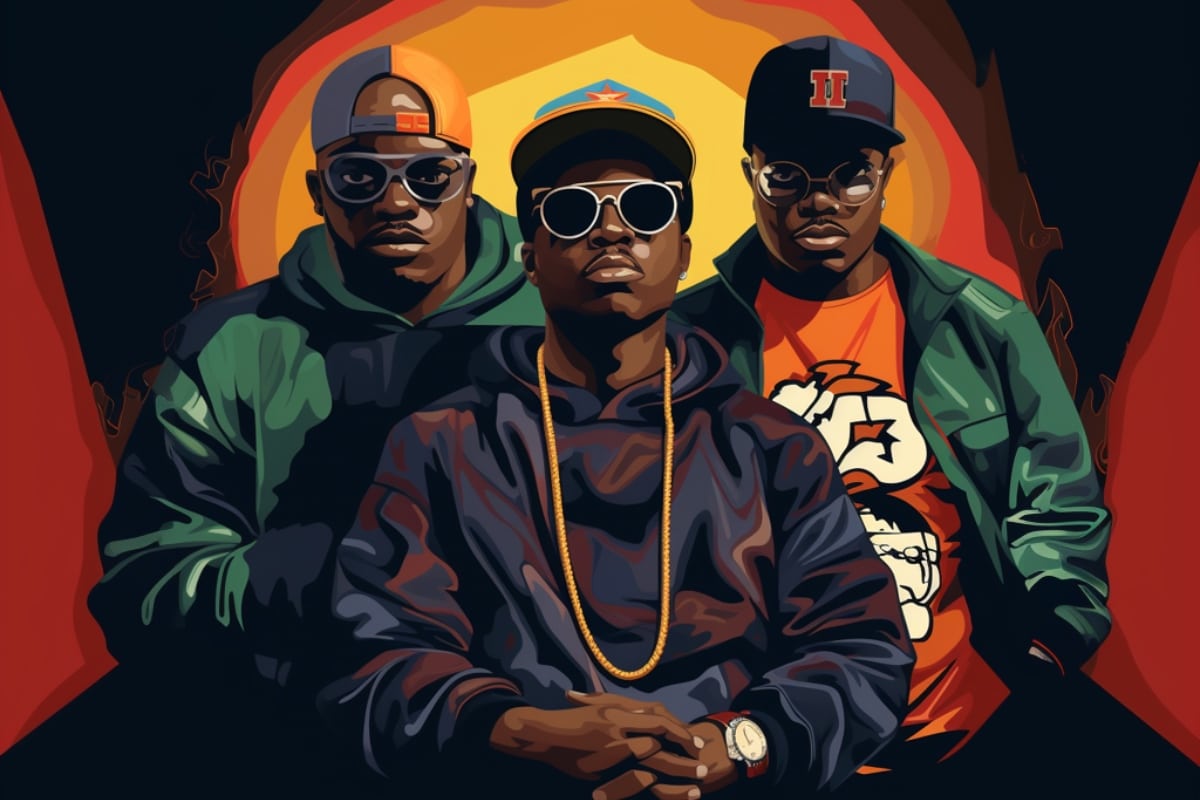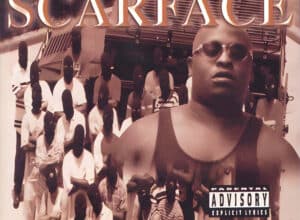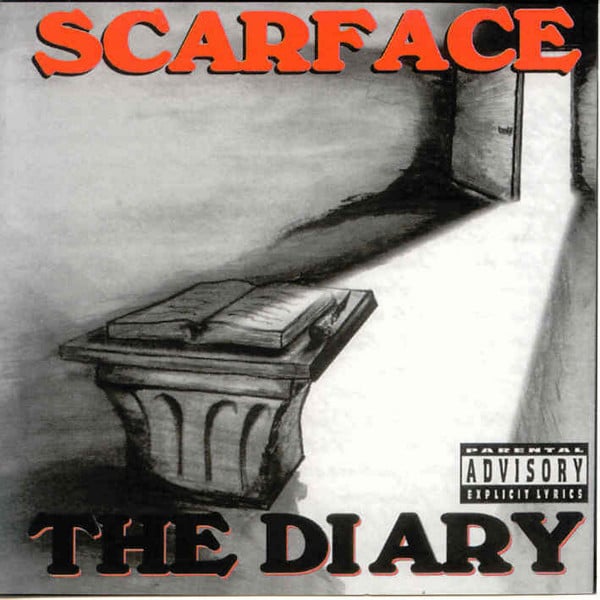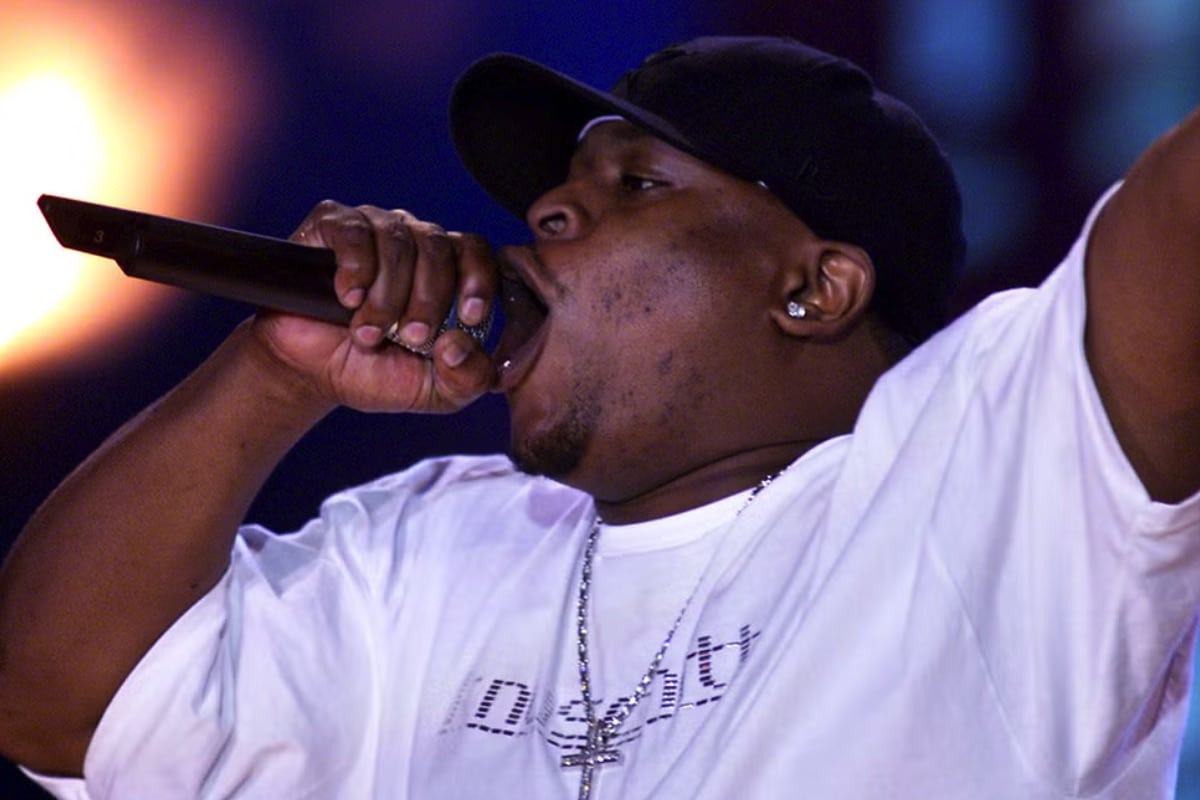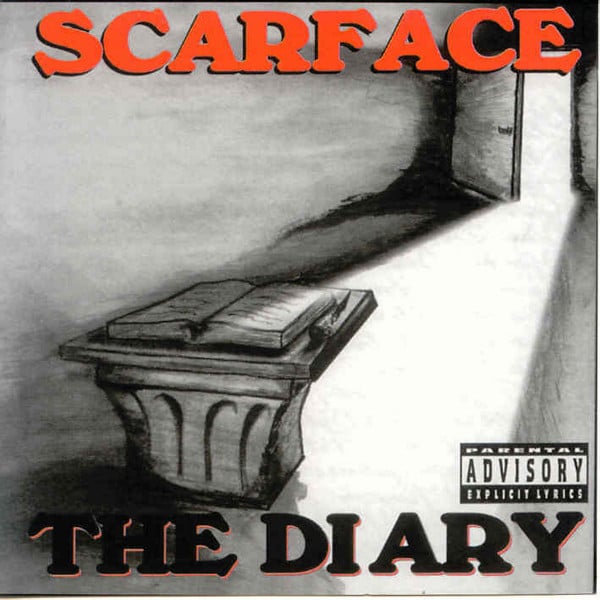In the heart of Houston’s vibrant hip-hop scene stands an indomitable figure, a legend whose lyrical depth and visceral narratives have carved out a space that few can match—Scarface. A beacon of Southern rap, he never hesitated to merge gritty street tales with profound introspections, offering a window into the soul of a man grappling with the world around him.
Since bursting onto the scene with the seminal Mr. Scarface Is Back, he’s consistently elevated the game, delivering masterpiece after masterpiece. Albums like The Diary and The Fix aren’t just staples in his discography but are cornerstone contributions to hip-hop at large, demonstrating the breadth and depth of his storytelling capabilities.
Representing H-Town with unparalleled pride and passion, Scarface’s influence runs deep, impacting not only the South but the entire rap landscape. Every beat, every bar, and every album from this titan tells a story, marking the chapters of an illustrious career that remains as influential as it is iconic.
So let’s get into it. From his ’91 debut album, Mr. Scarface Is Back, to his 2002 magnum opus, The Fix, we rank every Scarface album, from worst to best.
11. My Homies Part 2
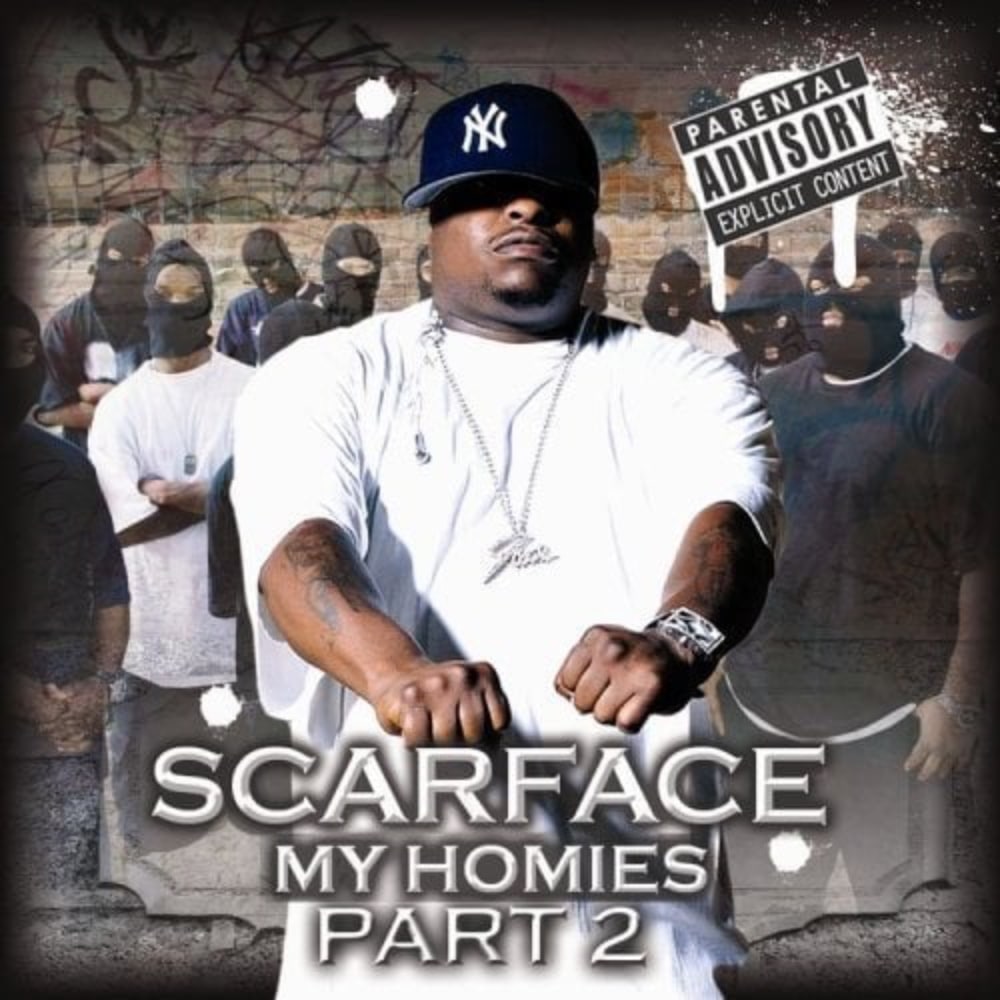
Released: March 6, 2006
Label: Rap-A-Lot
Singles: N/A • Features: Z-Ro, Ice Cube, Beanie Sigel, The Game, Yung Redd, Lil Ron, Skip, Ghetto Slaves, Partners-N-Crime, Juvenile, Lil’ Flip, Chamillionaire, Bun B, Spaide R.I.P.P.E.R., Vicious, Mr. Lee, 8Ball & MJG, E-Rock, Lil’ Keke, Rell, Geto Boys, Lil’ Keke, Coota Bang, Criminal Manne, MJG, Yukmouth, Pimp C, Petey Pablo, Devin the Dude, Dolla Boy, Mike Jones, Billy Cook, Scarface, Kanye West, the Last Poets, Mos Def, Do or Die, Trae.
Released in 2006, this double-disc project aimed to capture the essence of its predecessor, My Homies, but somewhat faltered in the attempt. The album features a sprawling guest list, and while collaborations can be electrifying in hip-hop, in this instance, they sometimes overshadowed the main event: Scarface himself. Let’s keep it a buck: it’s not that My Homies Part 2 doesn’t have its moments. There are tracks that remind listeners of Face’s undeniable lyricism and his knack for crafting deep, introspective tales. However, the project’s inconsistency and its slightly bloated feel make it hard to rank it among his top tier works. In the grand scheme of Scarface’s illustrious career, this album might not be the crown jewel, but even a lesser Scarface project has more soul and grit than what many MCs bring to the table in their prime. So while it might be lower on this list, My Homies Part 2 still showcases flashes of what makes Scarface a legend in the game.
10. My Homies
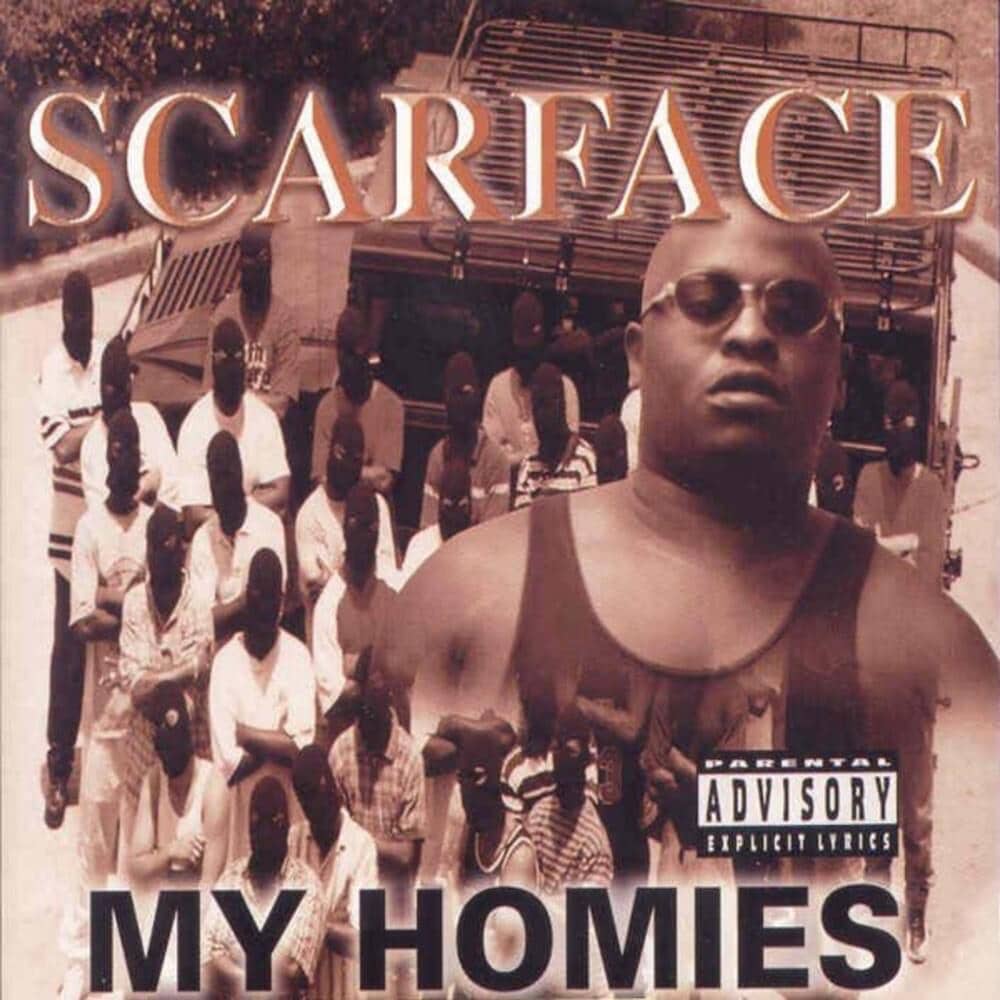
Released: March 3, 1998
Label: Rap-A-Lot
Singles: “Homies & Thuggs”, “Sex Faces”, “Win Lose Or Draw” • Features: Z-Ro, Hoodlumz, F.L.A.J., Bushwick Bill, K.B., B-Legit, Devin the Dude, Tela, Facemob, Master P, Doracell, 2Pac, Willie D, Ice Cube, Mr. 3-2, UGK, A-G-2-A-Ke, Johnny P., DMG, Lo-Ke, Do or Die, Rock Roc, Snypaz, Ghetto Twiinz, Facemob, E-Rock, C-Note, Big Mike, Yukmouth, Seagram, 007, Menace Clan, Caine, Rag Tag.
Back in ’98, Scarface made a significant move with My Homies, an ambitious double album that aimed to not just spotlight ‘Face himself but also provide a platform for his homies—both from the Geto Boys camp and the wider hip-hop realm. This project was a testament to his stature in the game, pulling in features from formidable names across the map. UGK, Ice Cube, Master P, and 2Pac (posthumously) all showed up, solidifying the notion that Scarface was not only a Houston icon but also a respected figure coast to coast. However, in trying to accommodate so many voices, the project, at times, feels less like a cohesive Scarface album and more like a mixed tape of ’90s hip-hop heavyweights. That’s not to say there aren’t gems on it. “Sex Faces,” with its sultry vibe, and “Homies & Thuggs” are just a couple that showcase the potency of the album. While My Homies might not be Scarface’s most laser-focused endeavor, it certainly stands as a testament to his influence, his reach, and the respect he commanded in the game during the late ’90s.
9. Made
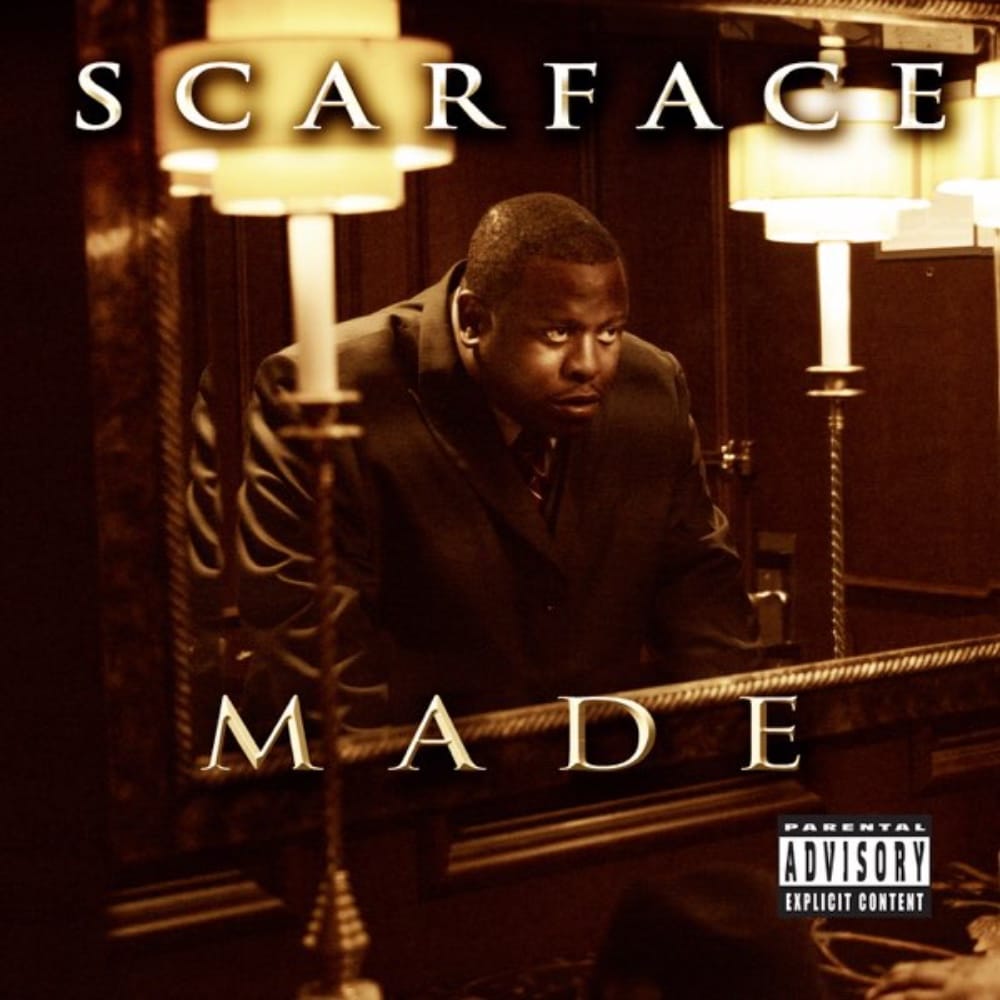
Released: December 4, 2007
Label: Rap-A-Lot
Singles: “Girl You Know” • Features: J. Prince, Wacko, Trey Songz, Z-Ro, Nina, Tanya Herron.
2007’s Made had Scarface stepping back into the ring, reminding us all of why he’s one of hip-hop’s most venerated storytellers. Fresh off a brief retirement after dropping The Fix, ‘Face seemed hungrier, more introspective, and was diving deeper into his psyche and past. On tracks like “Big Dogg Status” with T.I., Lil Wayne, and UTP, he showcases that even alongside the new-gen greats, he doesn’t fade; he elevates. “Boy Meets Girl” is a haunting narrative track detailing a toxic relationship, showcasing his pen game in storytelling. Then there’s “Never,” where he touches upon loyalty and the streets, painting vivid pictures of the gritty Houston life he’s so familiar with. While Made might not capture the lightning in a bottle of his iconic earlier works, it’s undeniable evidence of Scarface’s persistent growth as an artist. As with all his albums, there’s a life lesson behind every beat, and Made is no different, proving the OG still had much wisdom to impart on the younger generation.
8. Emeritus
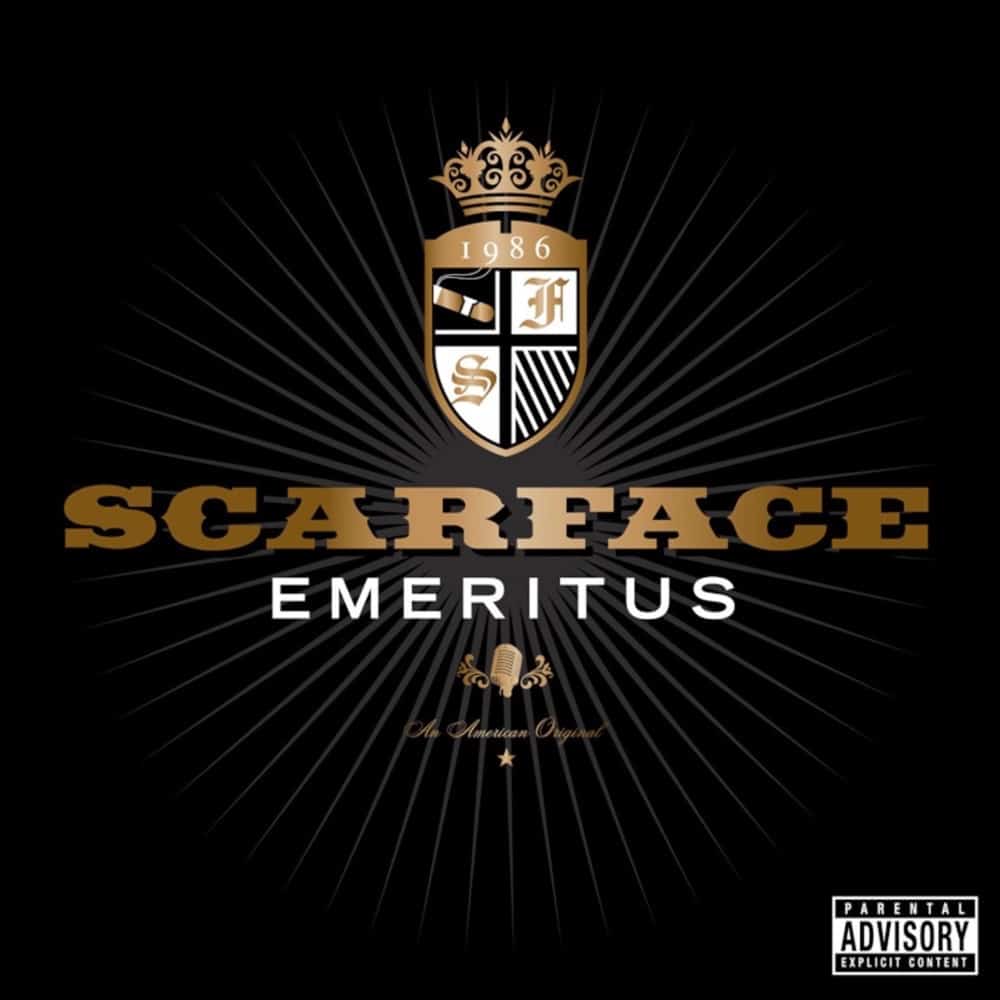
Released: December 2, 2008
Label: Rap-A-Lot
Singles: “High Powered” • Features: J. Prince, Papa Rue, Lil Wayne, Bun B, Bilal, Shateish, K-Rino, Slim Thug, Z-Ro, Wacko.
Dropping in 2008, Emeritus was pegged as Scarface’s swan song, the final chapter of an illustrious career. A fitting title, “emeritus” typically refers to professors who’ve retired but remain in an honorary title, and Scarface seemed ready to take that bow, leaving behind a legacy of influential bars and tales from the Houston streets. The LP is packed with a line-up of heavy hitters, with features from legends like Bilal, Bun B, and Ice Cube. Tunes like “High Powered” showed that ‘Face still had that raw energy, while “Can’t Get Right” dug deep into the issues of the black community with soul-searching lyrics. The project reflected a mix of vintage Scarface storytelling and mature contemplation. A nod to his legacy, “Still Here” reminisces on departed comrades while paying respect to the art form he so passionately contributed to. Even though the album didn’t quite hit the highest echelons of his discography, Emeritus stands as a testament to Scarface’s indomitable spirit, and a career where even his goodbye sounded better than most’s hello. A certified H-town product till the end.
7. Deeply Rooted
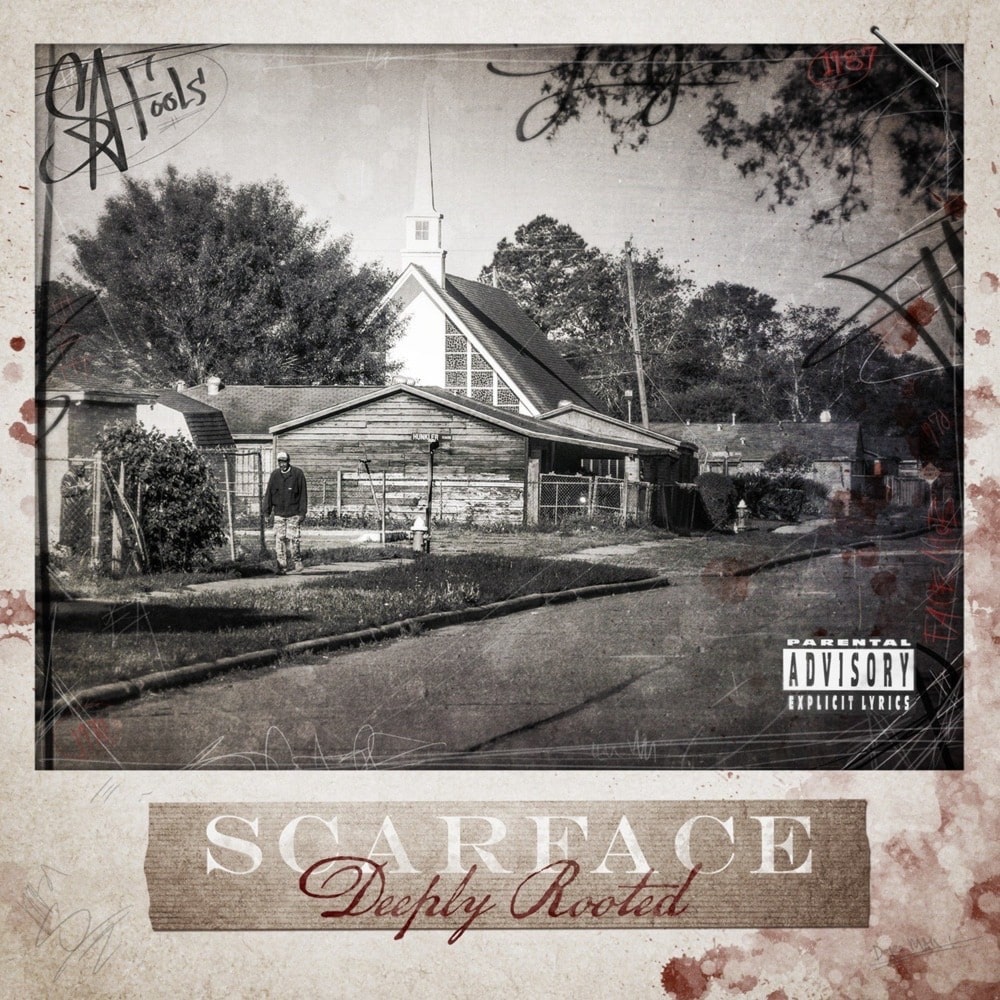
Released: September 4, 2015
Label: Let’s Talk
Singles: “No Problem”, “Exit Plan” • Features: Papa Reu, Jack Freeman, Z-Ro, Rush Davis, Rich Andruws, Nas, Rick Ross, John Legend, Avant, CeeLo Green.
Deeply Rooted, dropped in 2015, felt like a reintroduction to Scarface’s essence while also providing a platform for ‘Face to flex his evolved lyrical prowess. The title wasn’t just a fancy catchphrase; it encapsulated his deep connection to the Houston streets, his undeniable influence in the rap game, and his personal introspection. Tracks like “Anything” show Scarface wrestling with existential questions, something he’s done throughout his career but with a more mature lens now. “Mental Exorcism” stands out as a haunting commentary on racism and systemic issues that plague society. It’s raw, it’s gritty, and it’s unapologetically Scarface. Then you have bangers like “Black Still,” where he adopts an old-school Public Enemy track to lay down his thoughts on modern racial dynamics. The features here are pointed and effective, with names like Nas, Rick Ross, and John Legend contributing to the project’s weight. Deeply Rooted was an affirmation of Scarface’s enduring power in the rap world. While it might not resonate like his classics from the ’90s, it shows a rapper who has aged like fine wine, still able to craft deep narratives and poignant observations in a game that’s vastly different from when he started. The man’s still deeply rooted, no question about it.
6. The Last of a Dying Breed

Released: October 3, 2000
Label: Rap-A-Lot
Singles: “Look Me in My Eyes”, “It Ain’t, Pt. 2” • Features: UGK, Jayo Felony, Tha Dogg Pound, Jay Z, Nino Storm, Too Short, Devin The Dude, Redman, Young Noble.
The Last of a Dying Breed slid into the scene in 2000, solidifying Scarface’s place not just as a H-town legend but as a beacon for hardcore, introspective rap on a national scale. This was an era where bling rap was taking its stronghold, but ‘Face wasn’t about to bend his style for mainstream trends. The title itself is a declaration: Scarface saw himself as one of the last real OGs in the game, pushing genuine narratives over fluff. This album showcased a master at work. The introspective depth in tracks like “Look Me In My Eyes” was a testament to Scarface’s skill at navigating the complexities of the street life and the emotional turmoil it brings. Then you have joints like “They Down With Us” with UGK, a joint that spits Southern fire, proving that the South had something to say, echoing OutKast’s earlier proclamation. It’s impossible to ignore the heavy-hitters like Jay-Z and Redman blessing the project, but it was always Scarface’s show. The visceral rawness, the authentic tales, and the no-nonsense flows, all hallmarks of a Scarface project, were in full swing. The Last of a Dying Breed isn’t just an album title; it’s a statement of purpose, a flag planted firmly in the ground, declaring the enduring might of genuine street rap.
5. The Untouchable
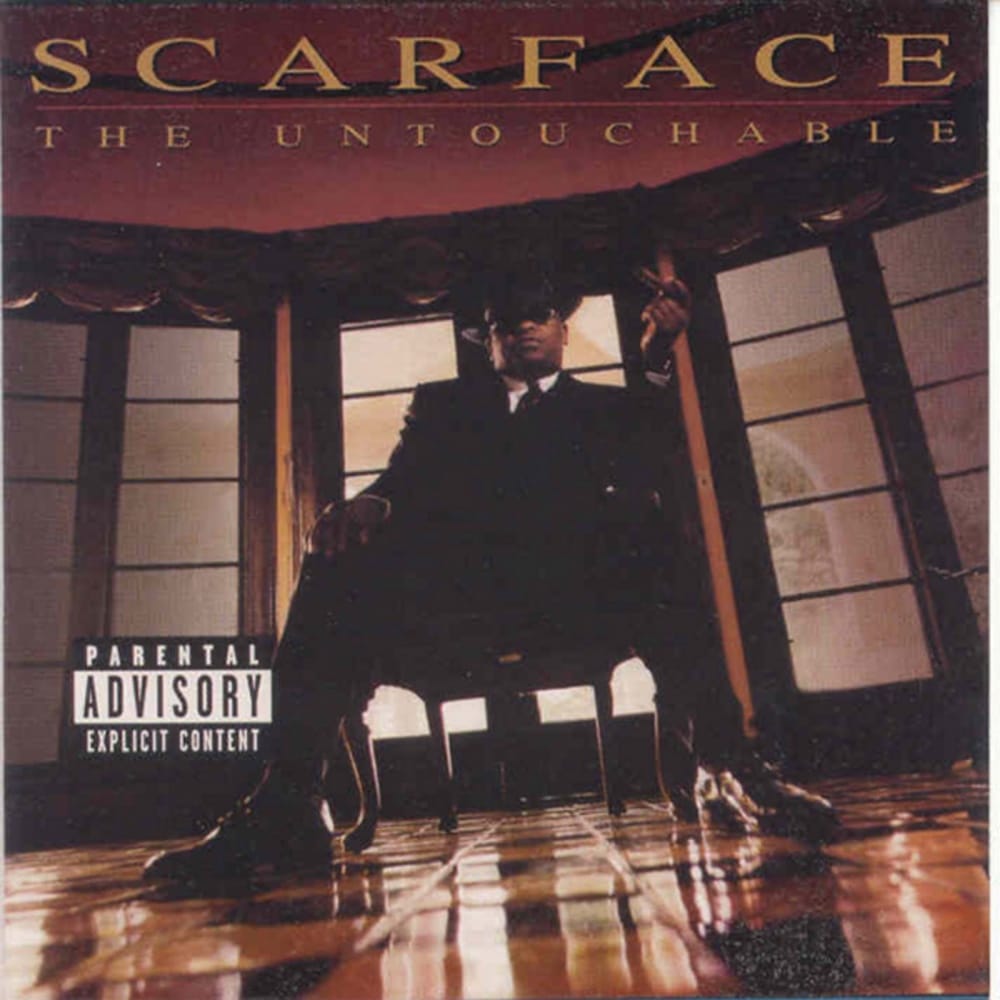
Released: March 11, 1997
Label: Rap-A-Lot
Singles: “Smile”, “Mary Jane”, “Game Over” • Features: Roger Troutman, Lisa Crawford, Daz Dillinger, Devin the Dude, K.B., 2Pac, Johnny P., Dr. Dre, Ice Cube, Too Short.
Coming off the heels of his classic The Diary, many wondered if ‘Face could keep the momentum going. Doubts were put to rest promptly. This project was an immaculate blend of the gritty and the soulful, as Scarface’s pen painted pictures that were vividly haunting and relentlessly real. One of the standout moments of this album has to be “Smile,” featuring 2Pac — a somber track that turned eerily prophetic given Pac’s tragic death. The song captured two icons at their most reflective, making it not only a highlight of the album but a timeless piece in hip-hop history. “Mary Jane” is another banger, a smooth ode to weed that showcased Scarface’s versatility, blending in with the rappers who had love songs for the herb. The synthesis of live instrumentation with samples on this album, coupled with Scarface’s razor-sharp lyricism and contemplative narratives, showcased a man in his prime, standing tall in the rap game. With The Untouchable, Scarface didn’t just prove he could follow up a classic with another top-tier project; he proved he was one of the greats, staking his claim in rap’s pantheon.
4. Mr. Scarface Is Back
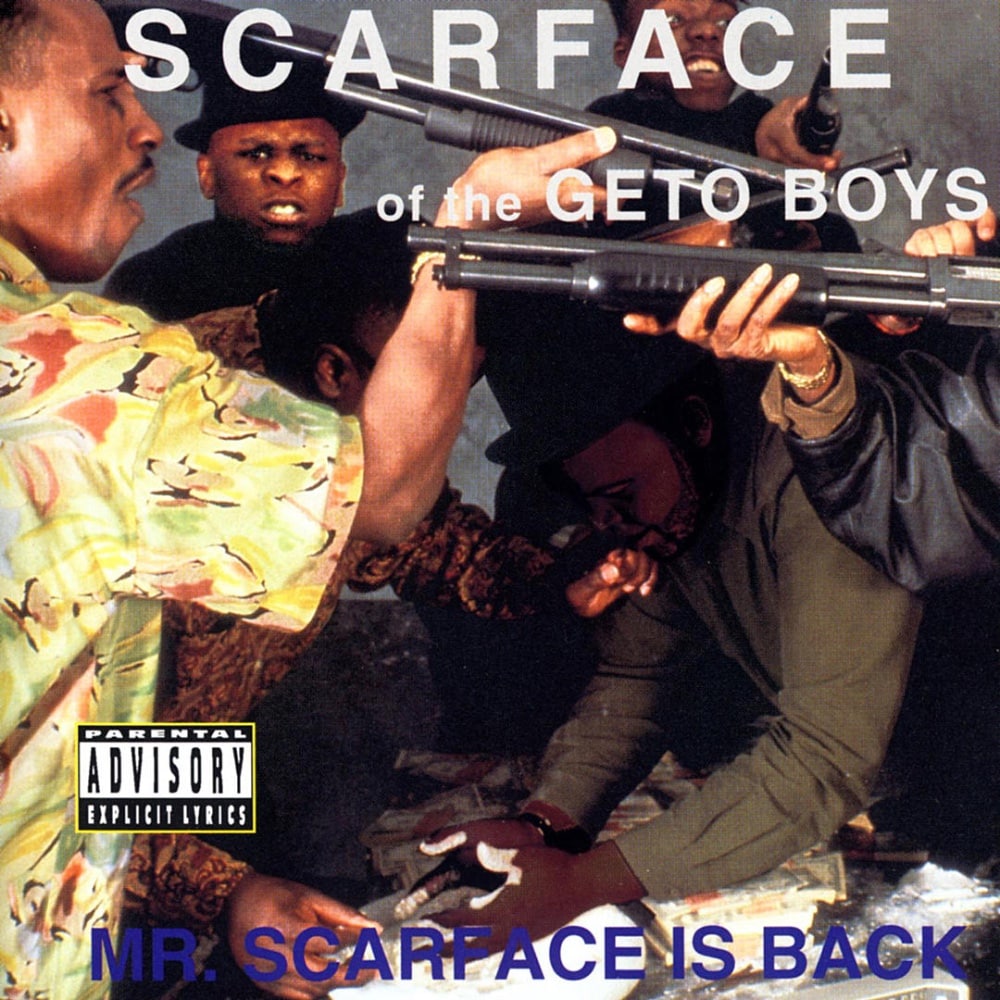
Released: October 3, 1991
Label: Rap-A-Lot
Singles: “Scarface”, “A Minute to Pray and a Second to Die” • Features: N/A
1991’s Mr. Scarface Is Back wasn’t just an album; it was a declaration. Scarface stepped out, not just as a member of the legendary Geto Boys but as a solo force to be reckoned with. This album was as raw as they come, packed with chilling tales from the Houston streets. Right from the jump, with tracks like “Mr. Scarface,” he established himself as a gripping storyteller, capable of making the listener visualize every detailed twist and turn. The eeriness of “Diary of a Madman” is incontestable, as ‘Face gives a first-person account of insanity, laying down a blueprint for many dark hip-hop tracks that followed in the 90s. But it wasn’t all menace and gloom. With “Born Killer,” he displayed a kind of charismatic ruthlessness, which made it clear he wasn’t just another gangster rapper; he was narrating real experiences and emotions. The production on this project was decidedly Southern, with its deep bass and layered synths, yet it had a universal appeal. This album made it clear that Houston had something to say, and Scarface was gonna be the one to say it. In the annals of hip-hop, Mr. Scarface Is Back isn’t just an album; it’s a statement piece, marking the moment Scarface planted his flag and made the game recognize his genius.
3. The World Is Yours
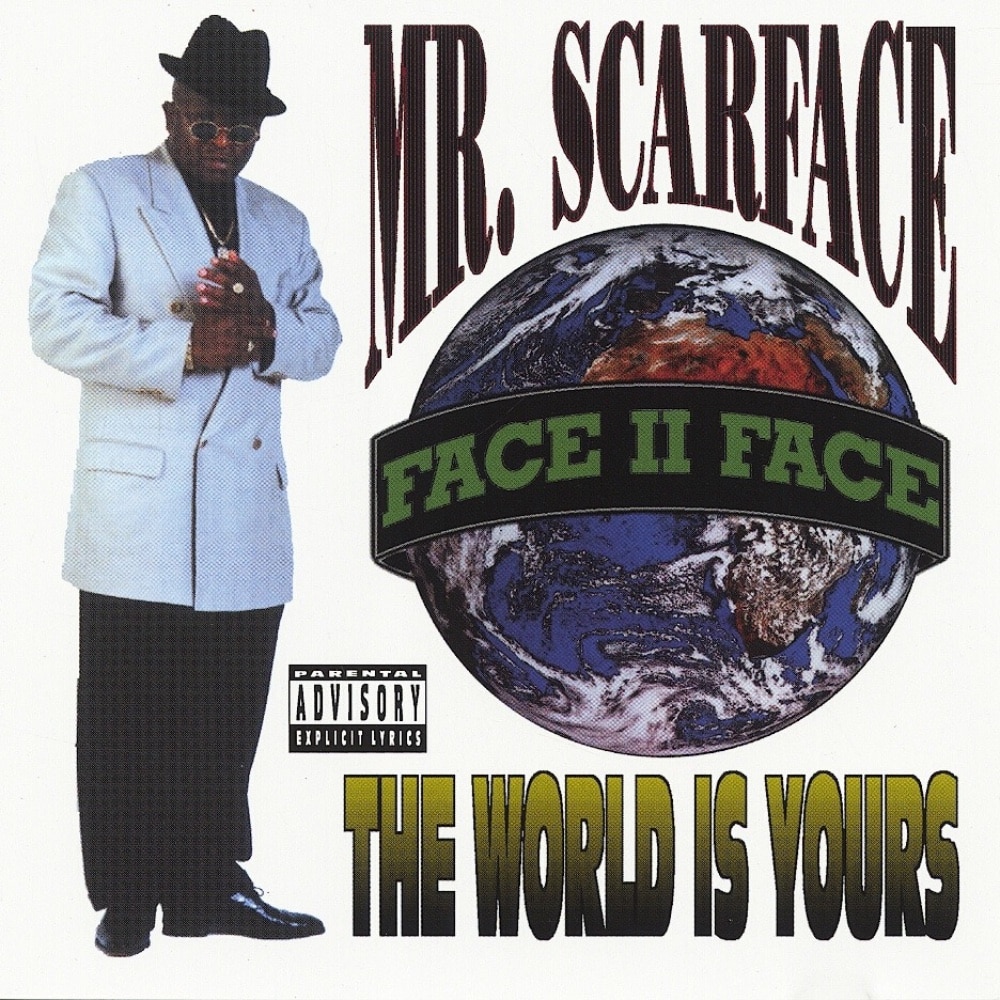
Released: August 17, 1993
Label: Rap-A-Lot
Singles: “Let Me Roll” • Features: J. Prince, DMG
The World Is Yours, Scarface’s sophomore solo effort, dropped in 1993, proving that he was no one-album wonder. If Mr. Scarface Is Back was the introduction, then this album was an elevation. This project showcased a more polished Scarface, a tactician who was weaving intricate tales with a newfound clarity. Kicking off with tracks like “Let Me Roll,” Scarface took us on a ride, musing on success, responsibility, and the trappings of the game. “Now I Feel Ya” gave an introspective look at his journey, detailing the stages of his life from childhood to manhood, highlighting the hard knocks and lessons. The genius of Scarface lies in his ability to shift from reflective to aggressive without missing a beat. Case in point, “Strictly for the Funk Lovers” is a raw display of his lyrical prowess. While his debut set the stage, The World Is Yours expanded his universe. The production, enriched with G-funk influences and soul samples, made it clear that Scarface was also evolving musically. This wasn’t just a rap album; it was a sonic journey through the mind of one of hip-hop’s greatest storytellers. It solidified ‘Face’s spot among hip-hop elites, proving he could juggle street anthems with deeper, more introspective cuts. The world might’ve been his, but with this release, he made sure the rap game was too.
2. The Diary
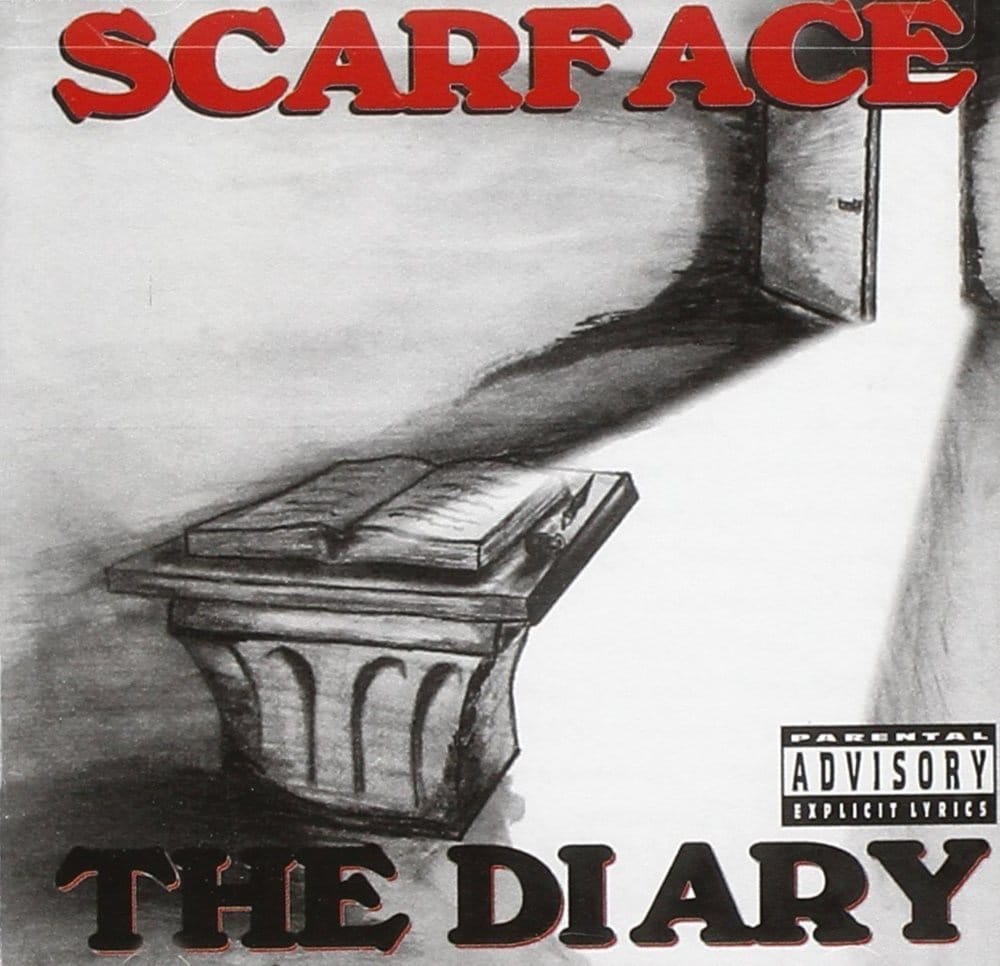
Released: October 18, 1994
Label: Rap-A-Lot
Singles: “I Seen a Man Die”, “Hand of the Dead Body” • Features: Ice Cube and Devin the Dude
Dropping in ’94, The Diary wasn’t just another album; it was a revelation, a cornerstone in Scarface’s discography. Here, ‘Face dished out his signature gritty lyricism, blending it with a haunting introspection that many hadn’t heard on this level before. The album opened the doors to the depths of his psyche, letting listeners in on both his demons and moments of clarity. “Hand of the Dead Body” featuring Ice Cube and Devin the Dude is a precise critique on the misinterpretation and stigmatization of gangsta rap, asserting that rappers are merely narrators of their environment. Then there’s “I Seen a Man Die,” a haunting track where Scarface delves into existentialism, contemplating life and death with an eerie calmness. But The Diary wasn’t all melancholic musings. “No Tears” showed a more defiant Scarface, unyielding and resilient in the face of adversity. And “Goin’ Down” was that jam you’d blast in the whip, a banger that showcased his versatility. The cohesive nature of this album, with its blend of street tales, deep introspections, and straight bops, made it a staple. The Diary wasn’t just Scarface at his best; it was the rap game being schooled on how to craft a timeless project.
1. The Fix
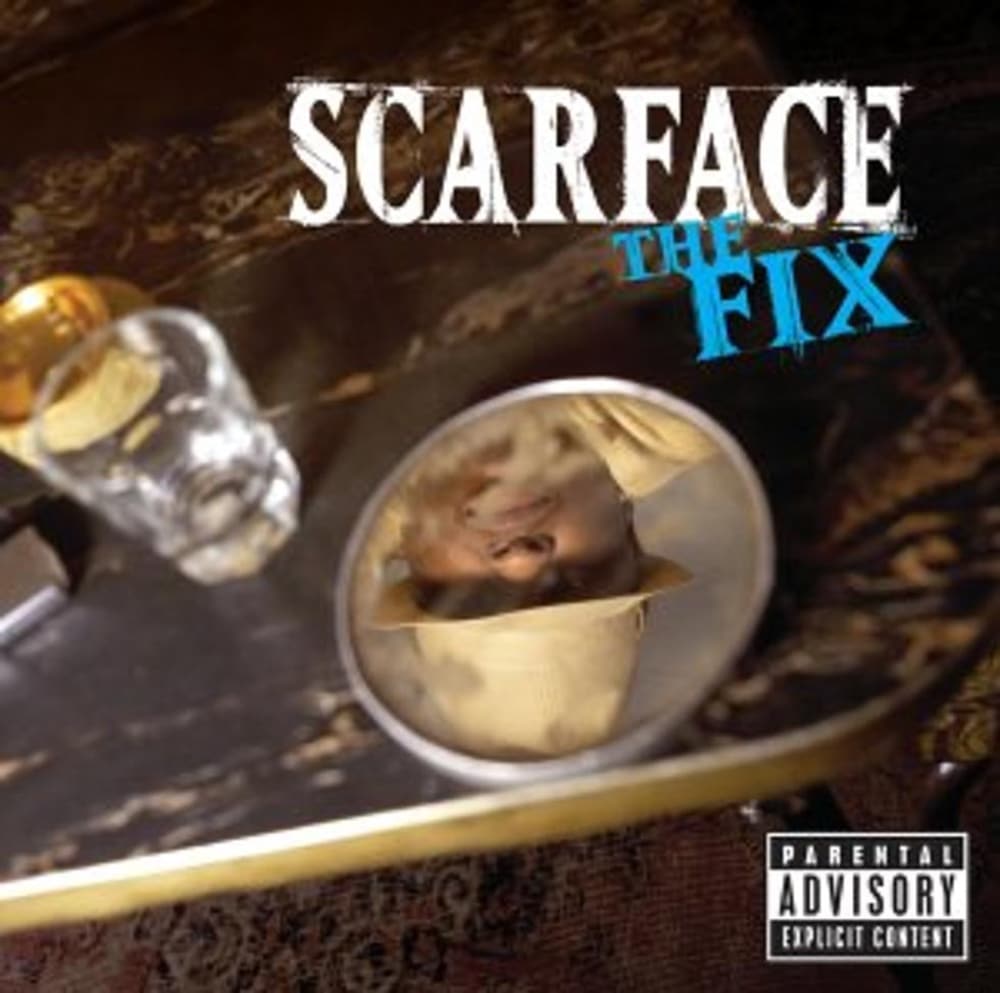
Released: August 6, 2002
Label: Def Jam South
Singles: “Guess Who’s Back”, “My Block”, “Someday” • Features: Jay-Z, Beanie Sigel, Kanye West, Nas, Tanya Herron, Kelly Price, Faith Evans, WC.
The Fix stands tall as Scarface’s magnum opus, an album that has come to define Southern rap and solidify Scarface’s position as one of hip-hop’s greatest storytellers. Released in 2002, this wasn’t just another album in his discography; it was a fine-tuned, introspective masterpiece, seamlessly blending the streets with spirituality. Tracks like “On My Block” provide a picturesque view of Scarface’s hood, painting it with both love and lament. Meanwhile, “In Cold Blood” takes listeners down the twisted corridors of revenge, loyalty, and betrayal, echoing sentiments of old gangster tales. The album’s highlight, “Guess Who’s Back” featuring Jay-Z and Beanie Sigel, became a hip-hop anthem, with its captivating beats and top-tier bars showcasing each artist’s prowess. But The Fix also went deeper. Scarface’s spiritual journey is evident in tracks like “Heaven,” where he grapples with his faith, and “Someday,” where he contemplates mortality and the afterlife with Kelly Price gracing the track. Featuring heavy-hitters like Kanye West and Nas and working with producers like The Neptunes, Scarface created an album that transcended regional borders. The Fix wasn’t just the best of Scarface—it was a lesson in hip-hop artistry, demonstrating how to weave narratives, beliefs, and raw emotions into a timeless tapestry.
